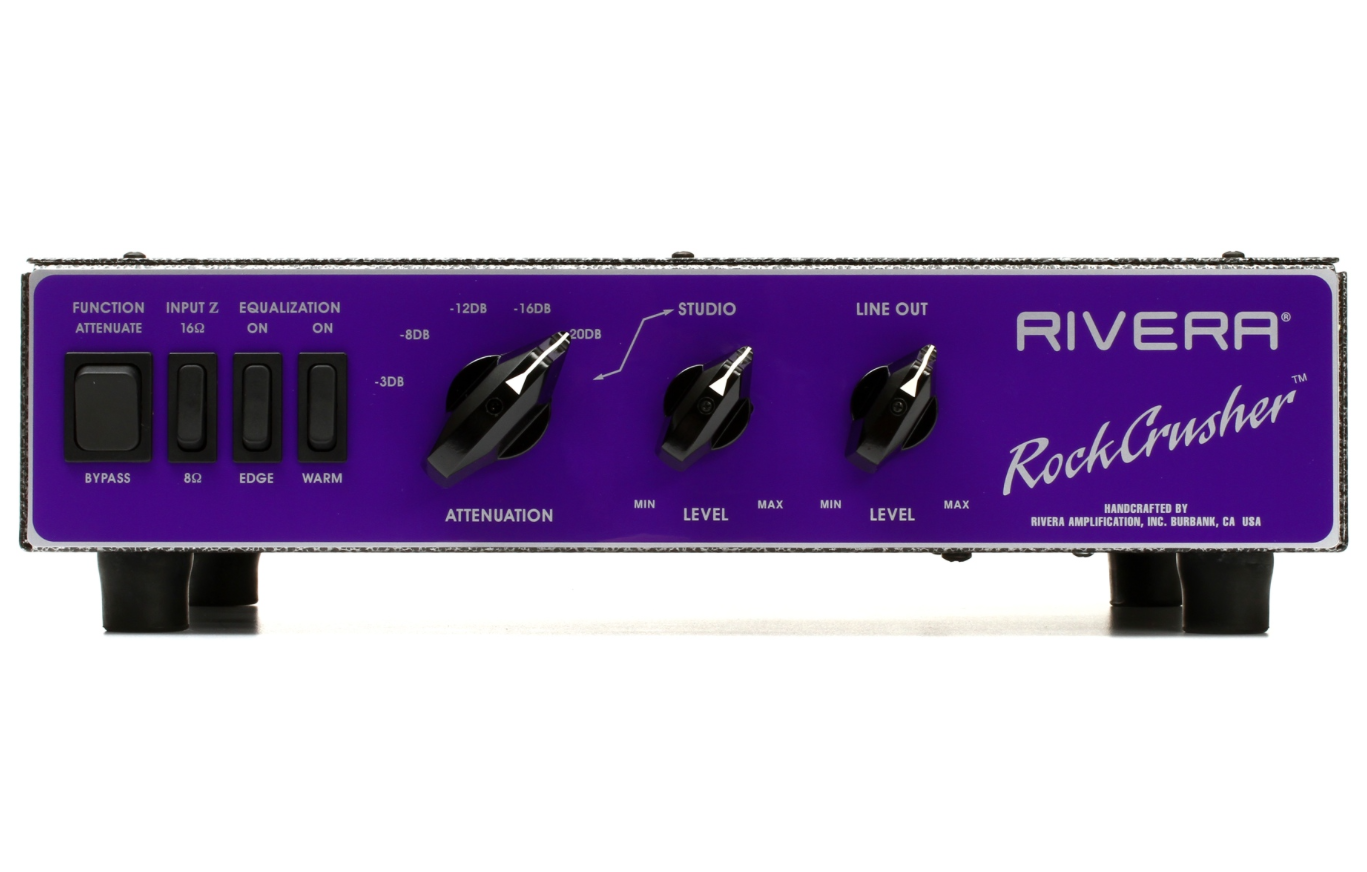How To Use Impulse Responses

If you want to tape a real guitar amplifier, but you don't have the right room or mics to adequately capture the tone of the speaker cabinet, one option to consider is to record your amp direct to your sound interface, and then employ a speaker simulation plug-in to add the cabinet response to the track.
To do this, yous'll need a few things. First, you need to exist able to get the sound from your amplifier directly into your sound interface. This tin be accomplished several ways — HOWEVER, you definitely CANNOT connect the speaker output from your amp to a Mic or Line input on an sound interface. This WILL outcome in extreme damage to one or both devices!
If you accept a line output on your guitar amp, y'all can use that. If non, yous can use a device like a Hughes & Kettner Red Box, a Mesa Boogie CabClone (some Boogie amps fifty-fifty have built-in CabClones, which is super user-friendly), a Rivera RockCrusher, SPL Cabulator, Radial Headload, Ii Notes Torpedo Reload, or another attenuator that has a line output. And remember, your amplifier always needs to see the load of a speaker at its speaker output, so if you're non planning to monitor through a guitar cabinet or speakers, you'll need to utilise a load box or attenuator to simulate a load or risk damaging your amp. Always follow the manufacturer'due south directions when connecting your amp to an attenuator/speaker/recording device.
When you record your amp direct into your DAW, it will likely audio raw, sparse, and harsh. That's considering the speaker does a lot of tone shaping on the amp's tone, and you've removed the speaker from the equation. At this point, you can use any "convolution" plug-in that allows you to load impulse responses (IR) — basically "impulse" recordings of actual spaces and then "convolves" those IRs into the equivalent of EQ curves and ambiance. You can use a convolution reverb such every bit AltiVerb or Waves IR-1, or you can use one of the plug-ins that come with third-political party speaker cabinet IR software or hardware, or attempt the speaker emulation department of a modeling guitar amp plug-in such as Native Instruments Guitar Rig.
Put the plug-in on the raw amp rail, and you will have the sound of the amplifier running through a speaker cabinet, without needing to mic up a cabinet. Recording this way besides has the advantage of giving you an nearly infinite diversity of speaker cabinets to cull from, so you can tailor the speaker cabinet to the textile you've recorded and the rest of your tracks.
Inspiration. Information. Passion.
Being music makers ourselves, we love geeking out on all things gear. From the tweakiest techniques to the biggest ideas, our experts work hard to constantly supply inSync with a steady stream of helpful, in-depth demos, reviews, how-tos, news, and interviews. With over 28,000 articles and counting, inSync is your FREE resources for breaking news, reviews, demos, interviews, and more than.
How To Use Impulse Responses,
Source: https://www.sweetwater.com/insync/how-to-use-speaker-impulse-responses-with-guitar-amplifiers/
Posted by: rodriguezwrearpon76.blogspot.com


0 Response to "How To Use Impulse Responses"
Post a Comment